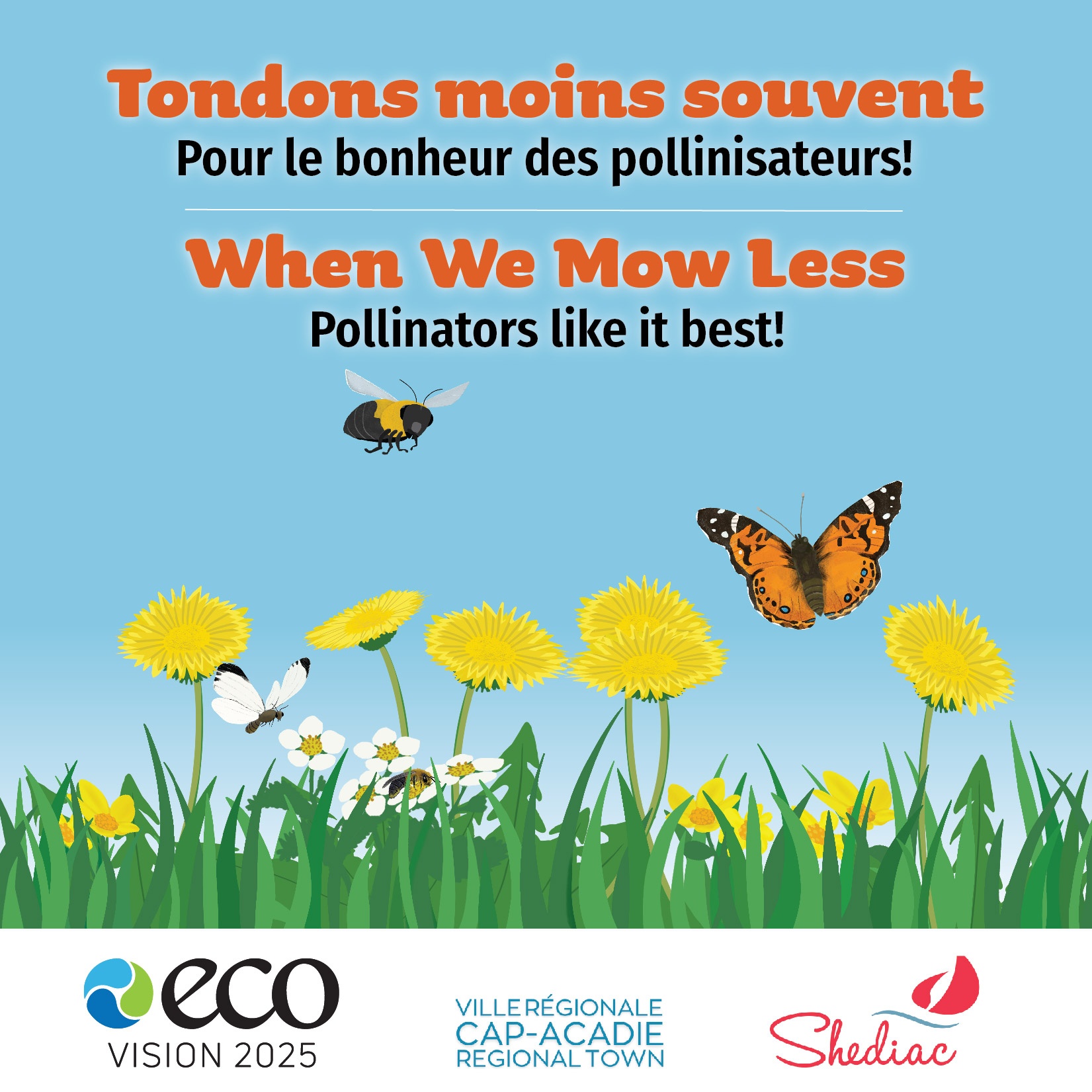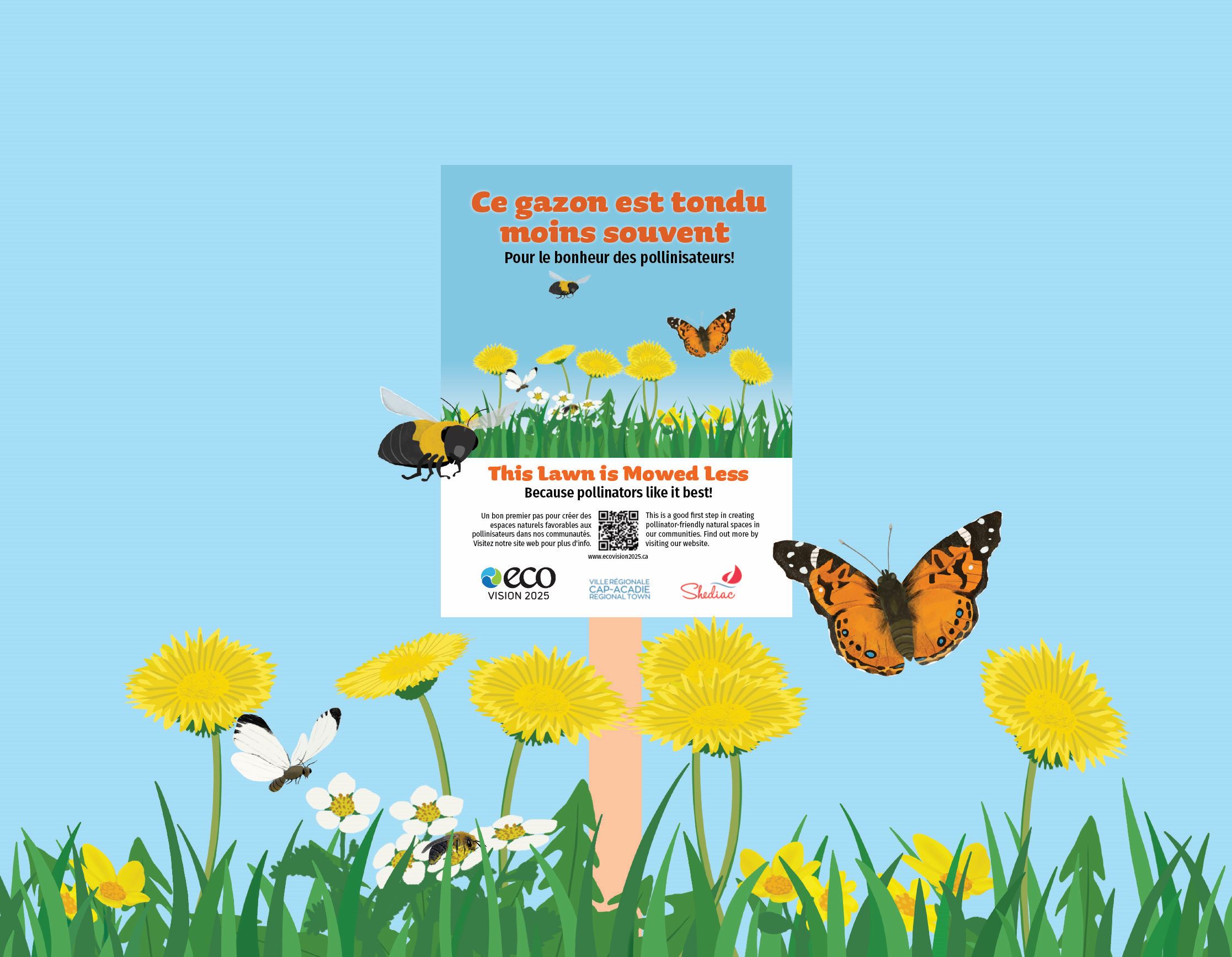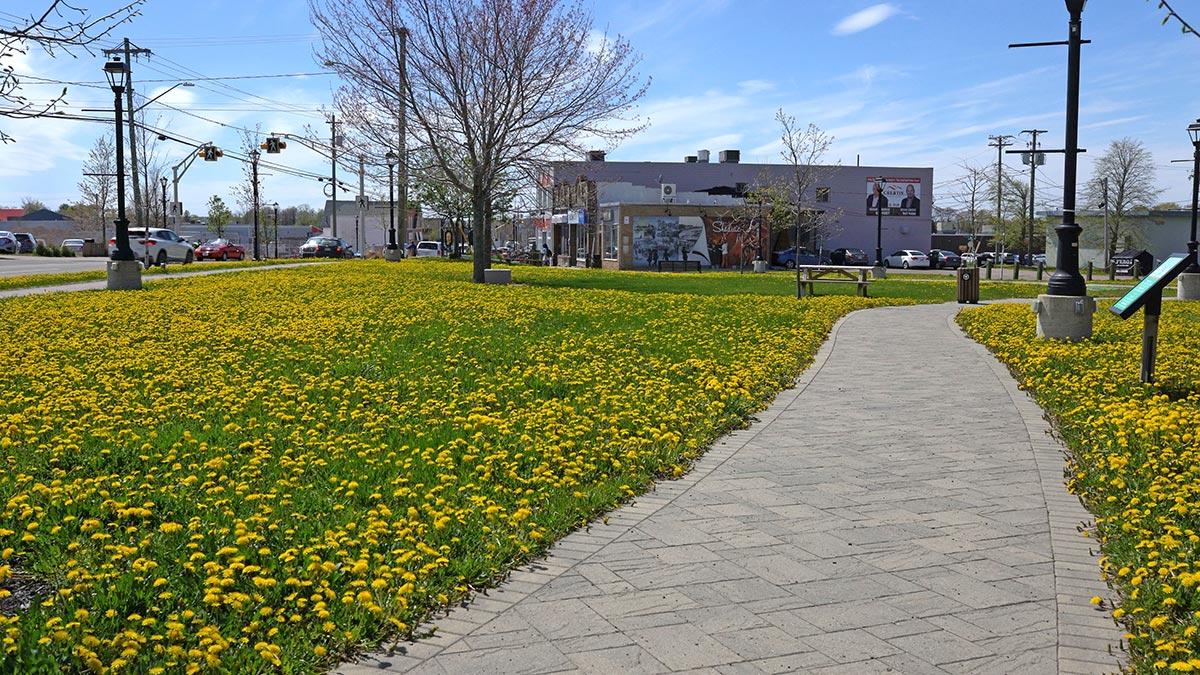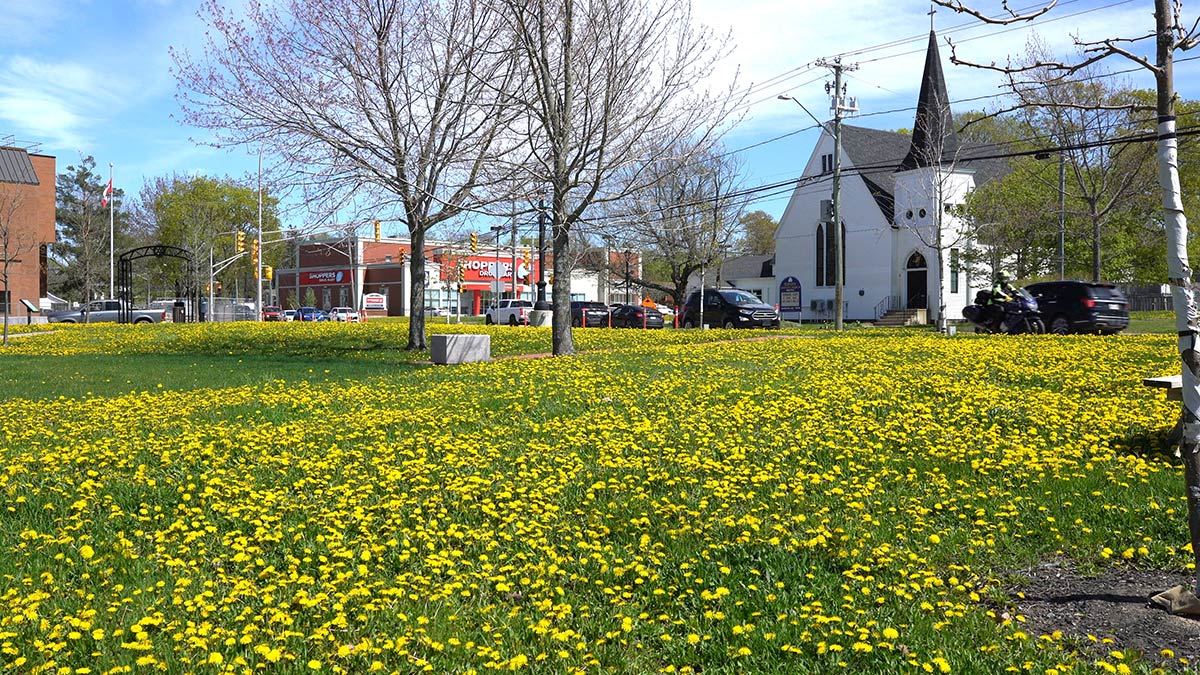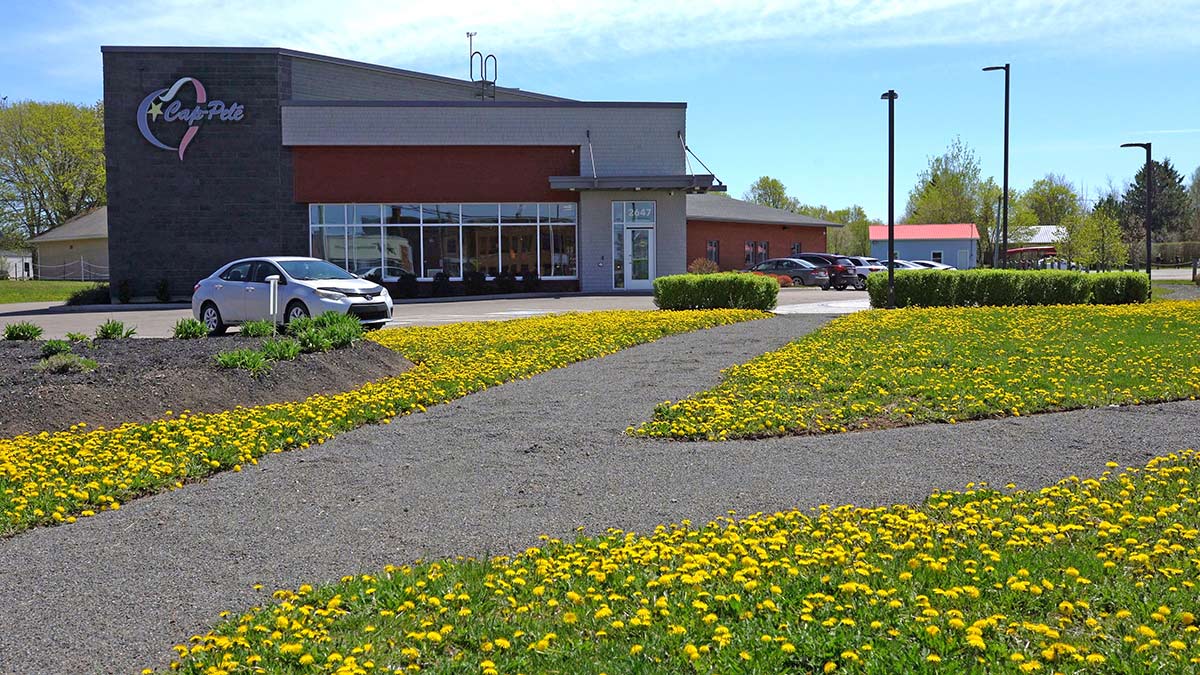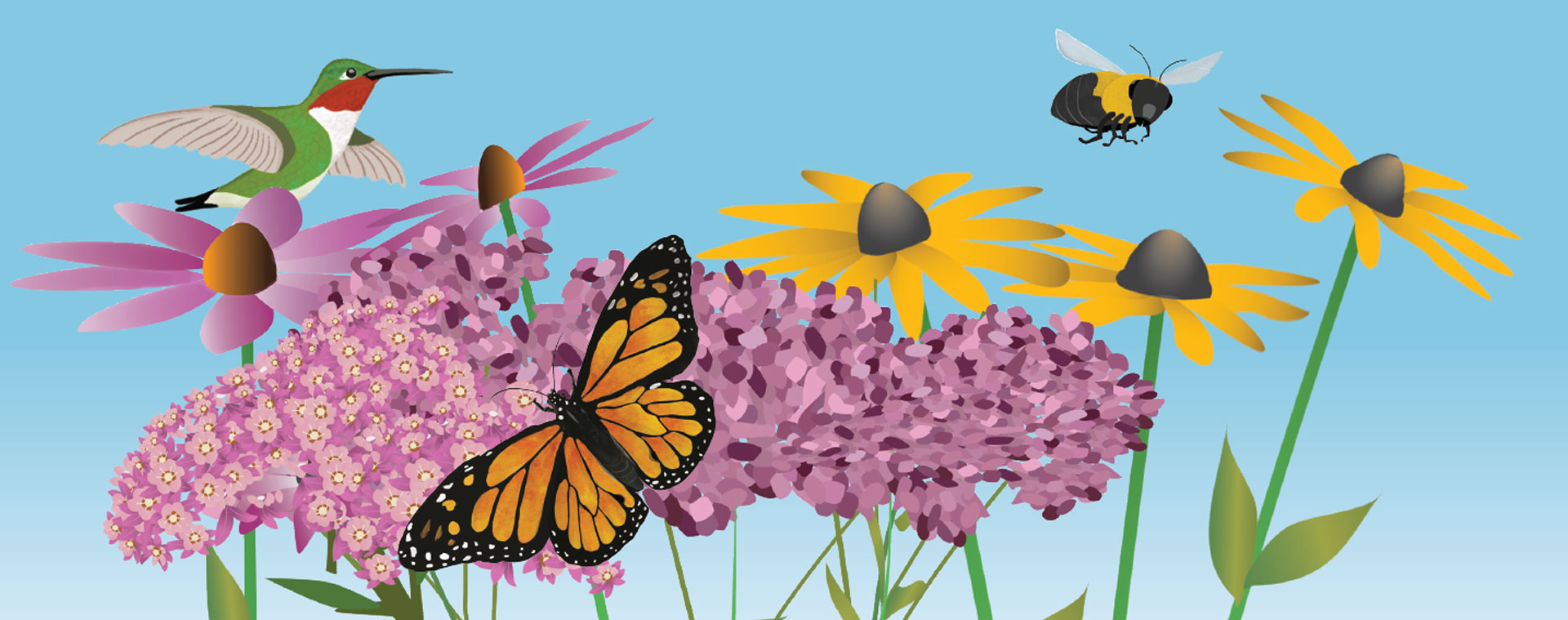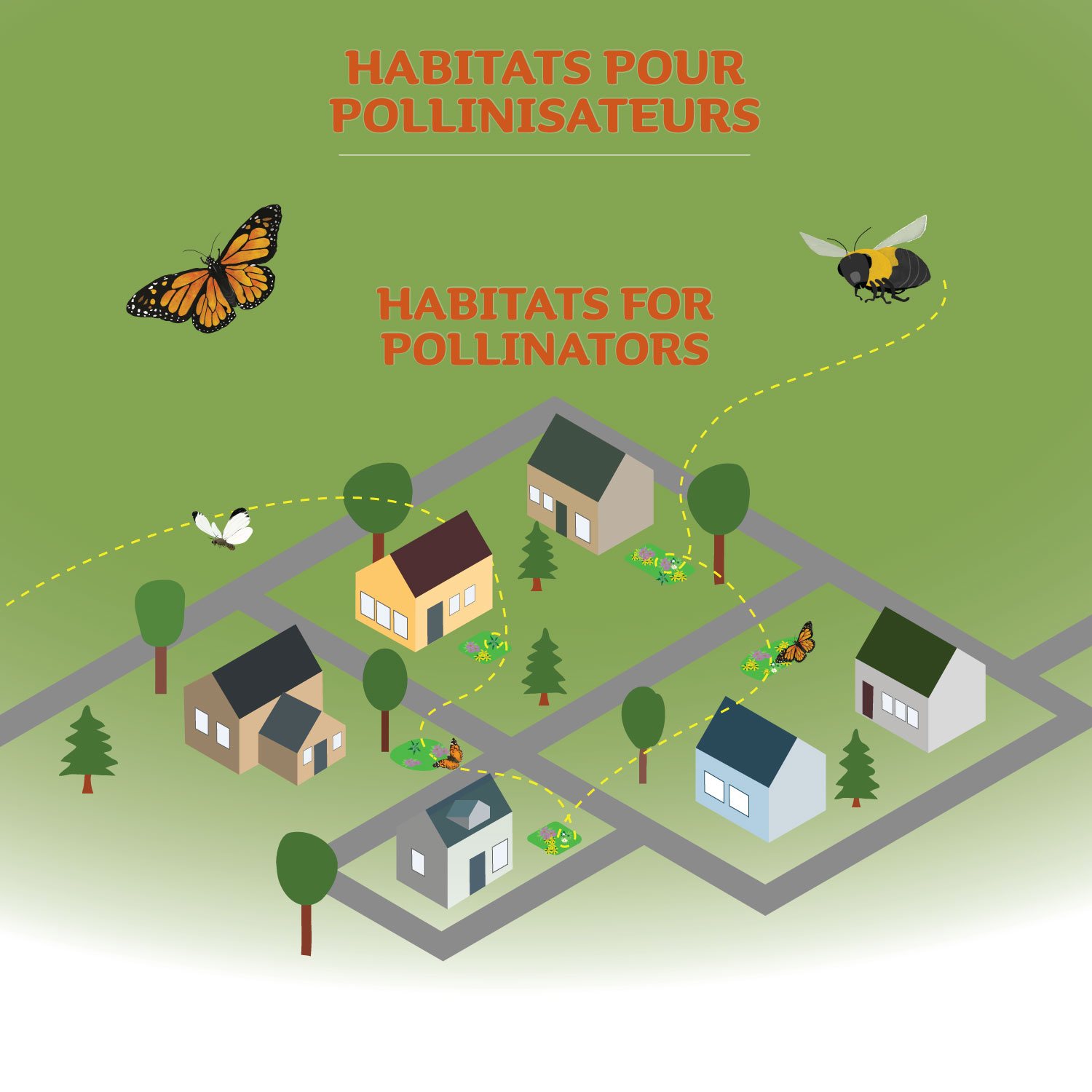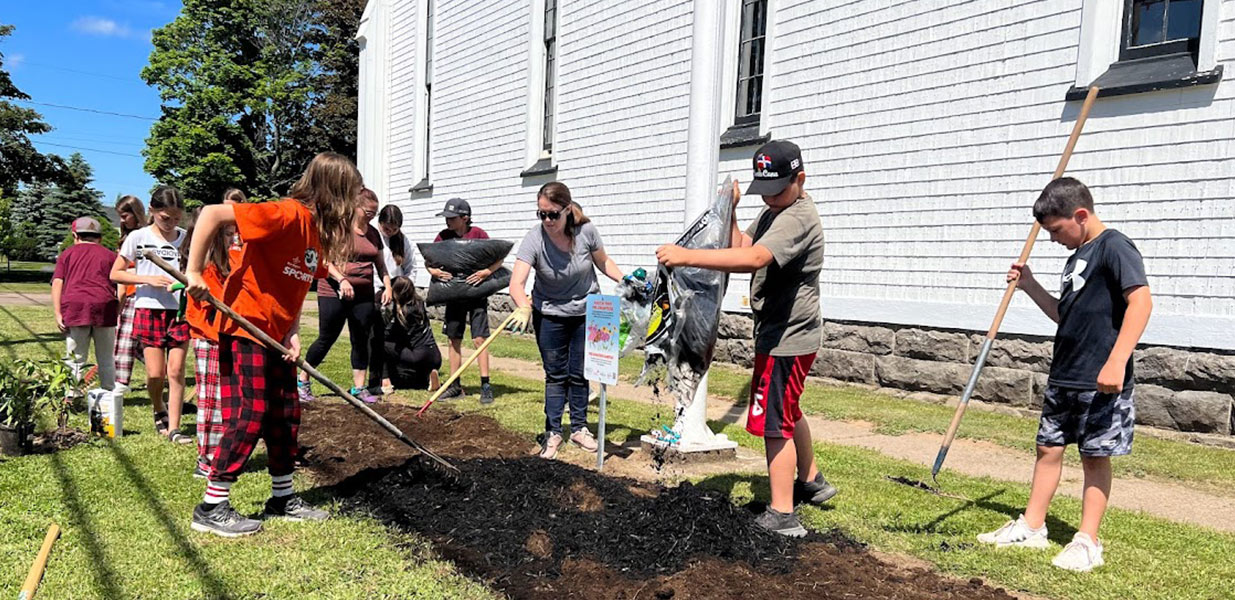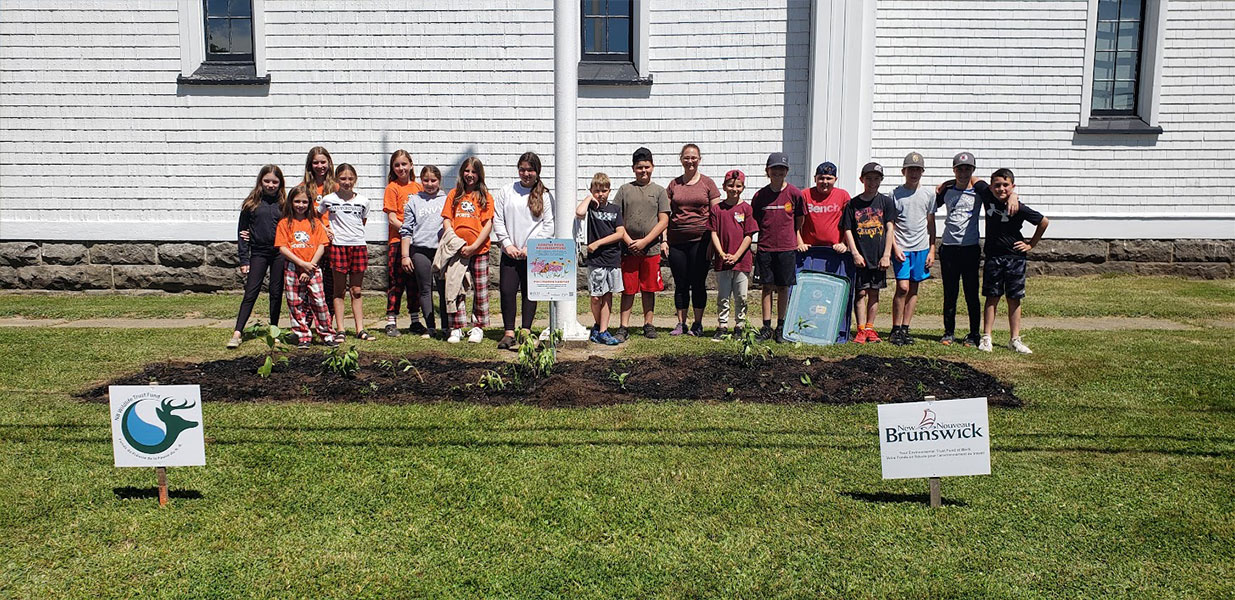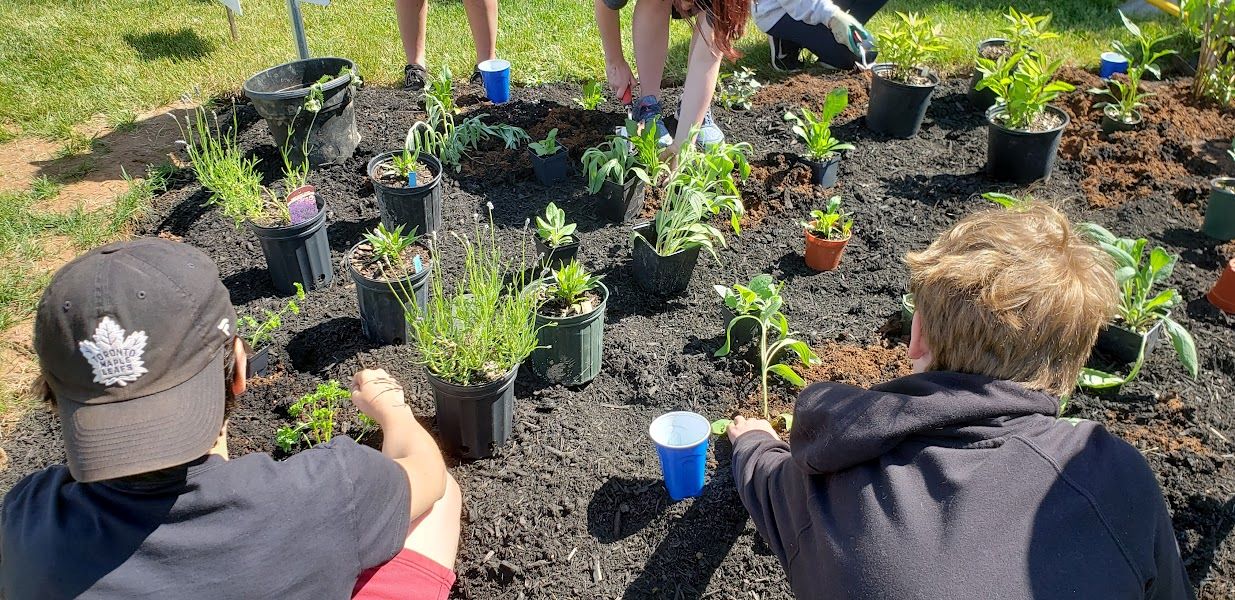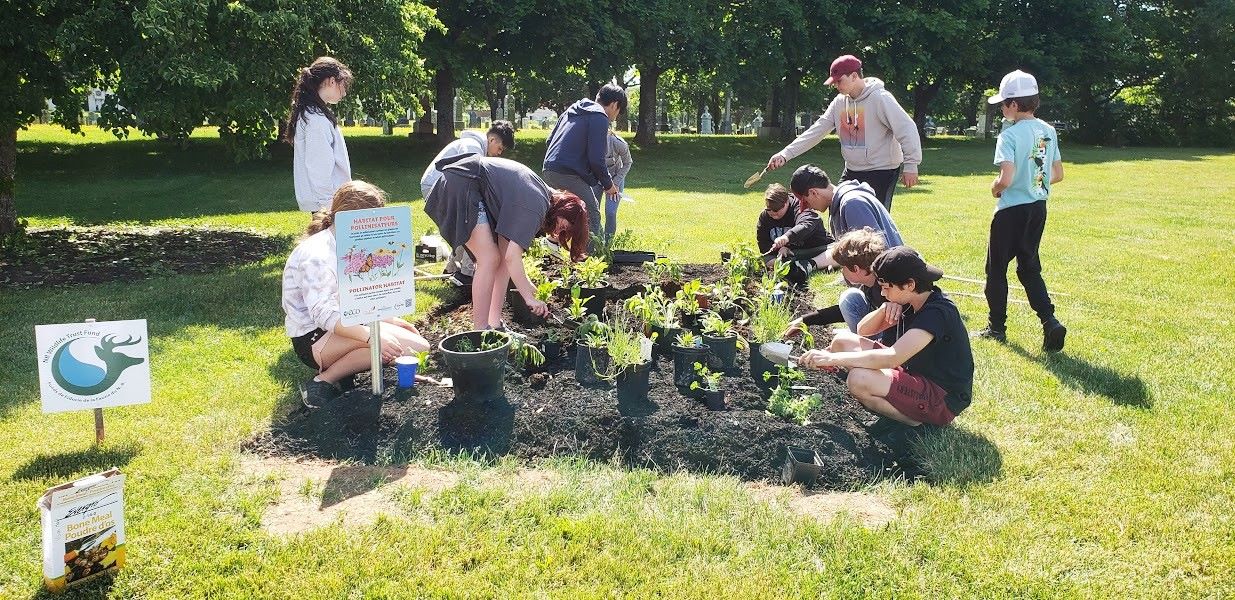The Importance of Pollinators
Pollinators like bees and butterflies are essential to our environment and our economy. They play an important role in the growth of trees, flowers and other plants around the world. In fact, about 85% of all flowering plants depend on them to produce fruits and seeds. According to Pollinator Partnership, pollinators are also responsible for one out of every three bites of food we eat!
Beyond agriculture, pollinators provide many other benefits and vital ecosystem services in both rural and urban environments. They are considered key species, as their activities result in the growth of trees and other plants, which provide food and shelter for creatures large and small. In addition, they play another role in the food web, as they are also important prey for other species, such as birds and amphibians.
Protecting pollinators is an important issue for our communities. We need them to preserve food supplies, biodiversity of plant and animal species, and the functioning of ecosystems. Another important fact to note is that by supporting vegetation, pollinators help regulate the climate and control erosion along waterways.
In our region, native pollinators face the same threats as elsewhere. Scientists believe that loss of natural habitat for feeding and nesting, pesticides, exposure to pollution, pests, viruses and climate change are among the reasons for the continued decline in pollinator diversity and abundance. Despite all of this, there are ways to help pollinators. In the next few sections, you will discover how.
Help pollinators by letting your lawn grow this spring!
“No Mow May” has given way to a major movement in favour of pollinators. This spring, in 2024, let’s make way for the “This lawn is mowed less, because pollinators like it best” campaign!
You don’t have to wait until the end of May to mow. By observing our yard, we can judge which actions are best to encourage pollinators at home, while evaluating the capacity of our mower! For example, you can mow once in mid-May or the week after.
In May 2022 and 2023, residents were invited not to mow their lawns, or at least to let some of them grow. The many flowers attracted bees, which had just emerged from the ground.
These native insects, like burrowing bees, which hardly sting at all, only wait for spring to find food during their very short life cycle. They are very important pollinators, as are queen bumblebees, which also emerge in spring.
This year, we can still do our part to help them by mowing less often, while observing the pollinators that visit us. Which of the 200 bee species found in the Maritimes are found in our yards? What flowers do they visit? Do we even have a few butterflies?
These questions help us learn more about the diversity of species that surround us. They also shed light on how to manage our yards.
Taking note of what we attract and what grows helps us decide when it’s time to mow. For example, we can observe factors such as when the flowers are maturing, to prevent the neglected appearance of dandelions whose seeds fly away. So you can chose to mow before these flowers spread everywhere.
Why did the Slogan for the campaign to help pollinators in May change this year?
- The slogan “No Mow May” was a little too restrictive for those who wanted to participate but weren’t ready to make a full commitment.
- The important thing is to remain flexible, giving people the choice of whether or not to mow before the end of May.
- As the start of our springs gets warmer and warmer, the grass sometimes begins to grow as early as April. By the end of May, it can be quite long, posing a challenge for those without a powerful lawnmower.
- A study shows that cutting the lawn every two or three weeks can also be beneficial for pollinators. The important thing is to strike a balance between the needs of pollinators and those of residents when it comes to lawn height.
- It should be noted that in the municipality of Shediac, the Tall Grass By-law is suspended in May, to follow the trend of the movement that is also taking place in other regions.
Signs in less mowed areas
During the month of May, the municipalities of Shediac and Cap-Acadie will be installing signs in less frequently mowed areas at selected locations on municipal property.
Displaying the slogan “This lawn is mowed less, because pollinators like it best”, these signs show that we can continue to do our part to help these beneficial insects.
* Note that as part of this initiative, the Town of Shediac has also suspended the Tall Grasses By-law for the month of May.
Native plants at home web page
To mark the occasion, we’re also launching a web page called “Native plants at home,” because these same bees also need pollen from native trees and shrubs, some of which flower earlier than dandelions. They also need the native wildflowers that bloom at various times of the season.
Visit the web page to learn how to encourage these flowers in your yard, on your property or in your woodland understories, and enjoy the visit of many species of beneficial insects, which will also attract birds to your home.
Who Are the Pollinators?
Pollinators include bees, butterflies, moths, wasps, flies, beetles, ants, hummingbirds and small mammals that feed on the nectar and pollen of flowers. In other parts of the world, even bats provide pollination! As they search for food, pollinators move from plant to plant, carrying pollen on their bodies. This allows the transfer of genetic material essential to the reproductive system of most flowering plants.
For millions of years, plants and pollinators have evolved together in this region, forming a mutually beneficial relationship. Although other creatures are also pollinators, it’s the insects like bees and butterflies that are better adapted to ensure the reproduction of the majority of native plants. In fact, there are over 800 native bee species in Canada, making them the main insect pollinators by far.
On the other hand, honeybees were brought here from other parts of the world. While their contribution is important to the agricultural sector and the provision of other products such as honey and wax, our native bees are best suited to pollinate local native plants. Along with other pollinators, native bees ensure the health of our local ecosystems, such as marshes that provide ecosystem services such as stormwater management.
Helping Pollinators Thrive
To sum it all up, pollinators are vital not only to our existence as human beings but to our planet. To maintain the diversity of our ecosystems, our region needs healthy native pollinator populations to ensure the production of the next generation of plants. Our food security also depends on it.
To complete their life cycle and thrive, pollinators need nectar, pollen and shelter that a wide variety of plants offer. The goal of this campaign is to provide information on how we can all participate in the conservation efforts that pollinators need. Let’s work together to help these essential creatures in our lives.
- Bees, butterflies and other pollinators depend on the diversity of plants, especially native flowers that grow in pesticide-free environments.
- Pollinators and native plants have evolved together to help each other. By adding a few native plants to your flower beds, you are directly contributing to the creation of habitats where they can feed and reproduce.
- Select a variety of plants that flower at different times so that there is a food source available for pollinators from spring through fall.
- Plant native trees like sugar maples and red oaks. They will flower in the spring and produce nectar for pollinators while providing habitat and food for birds and other animals.
- Some pollinators nest in dead plants and wood, or burrow into the soil. Leave some dead plants and leaves, wood logs and exposed soil around your garden.
- Mow the grass less often, perhaps every 2-3 weeks. Clover, dandelions and other flowers are good for pollinators.
- Place a shallow dish of water with a few stones so the pollinators can drink and not fall in. Remember to refill it often with fresh water.
- Buy or build a bee nesting box and make sure to maintain it.
- Talk with friends and teach children about what you’re doing to help pollinators.
- Share seeds, plants & gardening tips with neighbours & fellow gardeners.
Pollinator Gardens
This year, in an effort to create more habitat for pollinators in the region, flower gardens with some native species will be planted in each of the three municipalities. We will post updates of these gardens on this page.
We invite local citizens to set aside space in their flower beds for native flowers to help pollinators, and to contact us if they need more information. The goal is to have as many as possible in the coming years so that they form corridors for pollinators to have an abundant shelter and food source.
The New Brunswick Invasive Species Council (NBISC) Plant Wise Program helps gardeners and the (ornamental) horticulture industry to understand which plants are invasive and harmful to our communities. Their 60-page guide suggests native plant alternatives that are also beneficial to pollinators.
Pollinator gardens in the community!
In partnership with area watershed groups, schools, municipalities and other organizations, collective pollinator gardens are taking shape in the community.
Monarch Friendly City certification from the David Suzuki Foundation
In 2023, the municipalities of Shediac and Cap-Acadie received Monarch Friendly City certification from the David Suzuki Foundation in partnership with Nature NB. The certification confirms the two municipalities’ commitment to preserving the monarch butterfly’s habitat through concrete actions such as free milkweed distribution, seed collection, the creation of a demonstration garden and flowerbeds supporting the monarch, and the organization of various citizen activities. By taking part in this initiative, municipalities are part of a real butterfly effect.

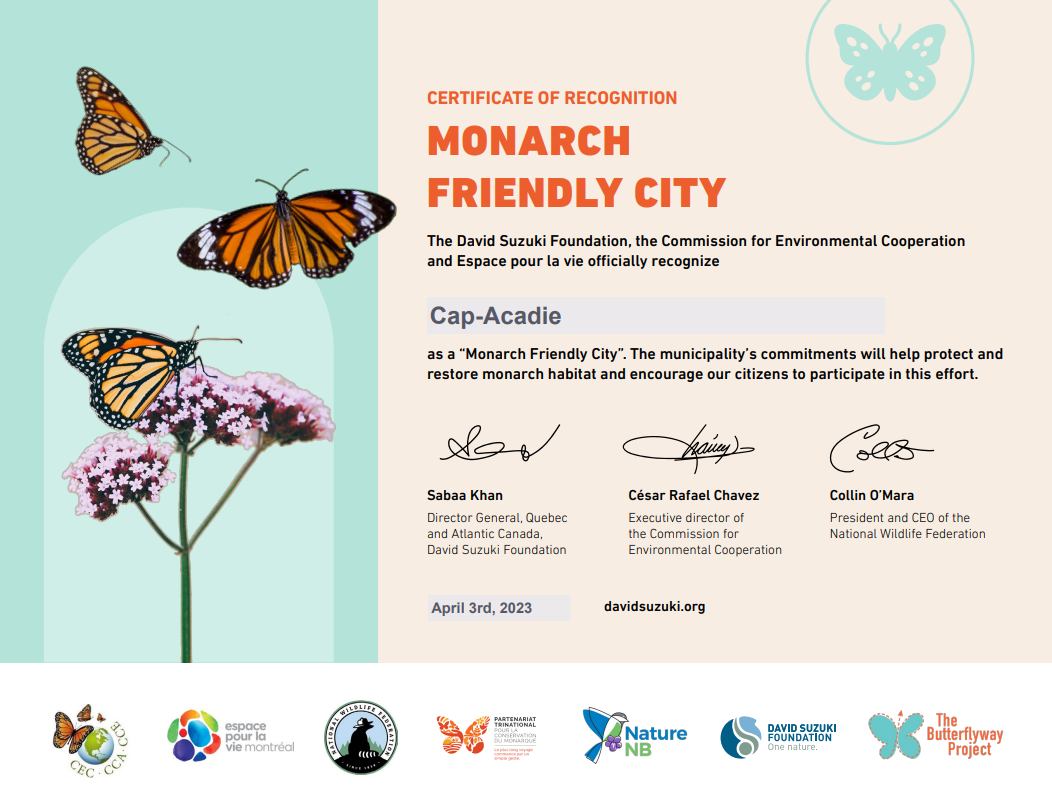
Educational Videos on pollinators
Interesting Links
Visit these websites to learn more.
The Canadian Wildlife Federation – HELPING MONARCHS AND POLLINATORS: Rethinking Mowing
https://cwf-fcf.org/en/explore/monarchs/Helping-Monarchs-and-Pollinators-Rethinking-Mowing.pdf
No Mow May Campaign – Nature Conservancy of Canada suggests leaving lawns alone in May
https://www.natureconservancy.ca/en/where-we-work/saskatchewan/news/no-mow-may.html
Pollinator Partnership Canada
https://pollinatorpartnership.ca/en/
Bee City Canada – Learn About Pollinators
https://beecitycanada.org/pollinator-resources/learn-about-pollinators/
Canadian Wildlife Federation – Grow It! Don’t Mow It!
https://cwf-fcf.org/en/explore/pollinators/grow-it/
Canadian Wildlife Federation – Habitats At Home – How Anyone Can Help Canada’s Wildlife
https://blog.cwf-fcf.org/index.php/en/habitats-at-home-how-anyone-can-help-canadas-wildlife/
Canadian Wildlife Federation – Pollinator Recovery
https://banwithaplan.org/pollinator-recovery/
Canadian Wildlife Federation – The Science of Pollination
https://cwf-fcf.org/en/resources/for-educators/resource-sheets/the-science-of-pollination.html
Canadian Wildlife Federation – Paving New Pathways for Canada’s Pollinators
https://www.youtube.com/watch?v=PiU5SBTj87I
Canadian Wildlife Federation – Perpetuating Pollinators
https://cwf-fcf.org/en/explore/pollinators/
Canadian Wildlife Federation – Wildlife-friendly Gardening
https://www.youtube.com/watch?v=TpNTQBV7_c8
Agriculture and Agri-Food Canada – Native Pollinators and Agriculture in Canada
https://farmlandhealthcheckup.net/uploads/resources/agriculture-agri-food-canada-native-pollinators-agriculture-canada-190522110858.pdf
Government of Canada – Build a Pollinator Garden – Protect Nature Challenge
https://www.canada.ca/en/environment-climate-change/services/nature-legacy/activities/build-pollinator-garden.html
Wildlife Preservation Canada – What is causing wild bee declines?
https://wildlifepreservation.ca/blog/what-is-causing-wild-bee-declines/?
Parks Canada – Join in and plant for pollinators
https://www.pc.gc.ca/en/nature/science/conservation/plantes-pollinisateurs-plant-pollinators
Bumble Bee Watch
https://www.bumblebeewatch.org/
Monarchs and Milkweed in New Brunswick
https://www.inaturalist.org/projects/monarchs-and-milkweed-in-new-brunswick
Besides No Mow May, add native plants for pollinators, conservationists say
https://www.saltwire.com/halifax/news/besides-no-mow-may-add-native-plants-for-pollinators-conservationists-say-100730807/?fbclid=IwAR2iFQ1nkXU00txa41ZPzn1PjpZQRzXbOfBtewIRLNhtuT5wZAFoRpfr7Hg
New Brunswick Invasive Species Council (NBISC) – Plant Wise Program
https://www.nbinvasives.ca/plantwise
CBC News – Native plants finding their way to more Nova Scotia gardens this spring
https://www.cbc.ca/news/canada/nova-scotia/native-plants-nova-scotia-1.6420201
CBC News – No Mow May is fine, but conservationists say more can be done to help pollinators
https://www.cbc.ca/news/canada/nova-scotia/no-mow-may-biodiversity-native-plant-species-pollinators-1.6456549?fbclid=IwAR0A21mAxVzmc8Z7IObeoEnKKFohQjds-cNDNFSzmWnn1BBx-wgQuuzev9c
Groupe de développement durable du Pays de Cocagne – Wild Pollinators & Their Natural Habitats
https://ecopaysdecocagne.ca/en/projects/345-wild-pollinators-their-natural-habitats
iNaturalist – Pollinators in Cocagne Area
https://inaturalist.ca/observations?place_id=any&project_id=pollinisateurs-de-cocagne-nb-pollinators&verifiable=any
Les ami.e.s de la nature du sud-est du NB
Pollinators in south-east NB, by Stuart Tingley
Educational Tools and Activities
One-pager brochure (with QR code leading to this page) available for download and printing – Bilingual fr-Eng, 7.5×11 in.
https://ecovision2025.ca/wp-content/uploads/2022/06/Depliant-pollinisateurs-Fr-Eng-3.pdf
Pollinator poster (with QR code leading to this page) available for download and printing – Bilingual fr-Eng, 11×17 in.
https://ecovision2025.ca/wp-content/uploads/2022/06/Affiche-Pollinisateurs-Poster-11×17-3.pdf
Canadian Wildlife Federation – Educational Activities for Schools
https://education.cwf-fcf.org/library/resources/get/230909/Educator%20Guide%20-%20Pollinators.pdf
Pollinator Partnership – Educational Activities for Schools
https://pollinatorpartnership.ca/en/p2c-kids
Pollinator Partnership – Bee Smart School Garden Kit
https://www.pollinator.org/bee-smart
Canadian Wildlife Federation – WILD Spaces, a pollinator conservation program for schools
https://cwf-fcf.org/en/explore/wild-spaces/
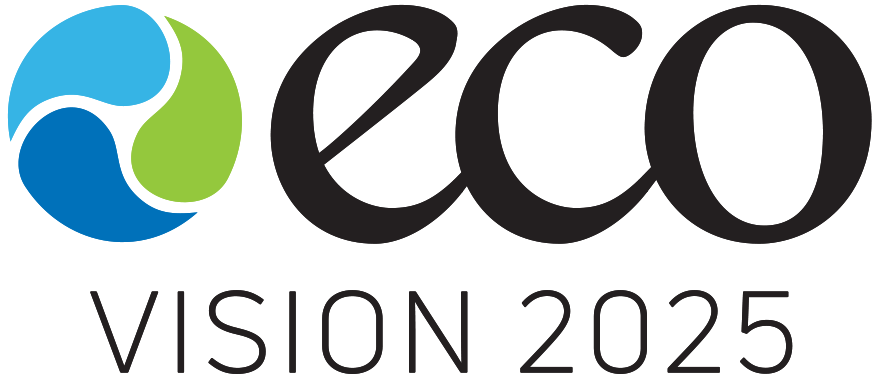
This initiative is sponsored by:
